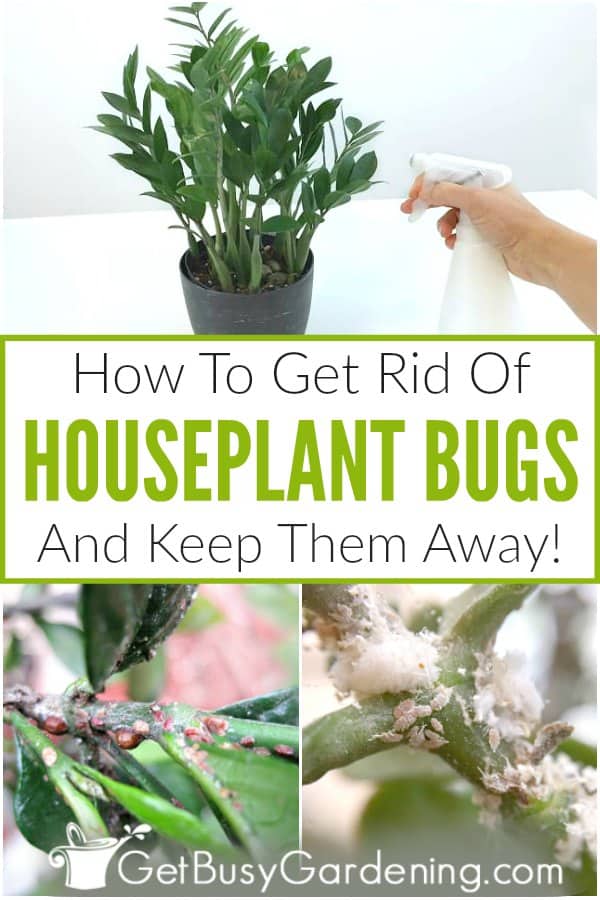Table Of Content

You can also introduce insects like ladybug beetles to feed on them. They feed on the larvae of gnats, which could help reduce the pest population. To do this, mix the nematodes in water and pour them into the soil. Within a few weeks, you should be free from these insect bug pests. Thrips are easy to identify because they have long slender black bodies with pointy tails. These long thin pests are usually black, but they can also be brown, greenish-yellow, or white.
How to Get Rid of Common Houseplant Bugs, According to Experts
If you leave these bugs around for too long, they will become much harder to control. Severe infestations are almost impossible to resolve, meaning you’ll likely need to discard the plant completely. You can also make use of neem oil by spraying the plant with it. Products with pyrethrin or deltamethrin can also prove useful in testing thrips. Most times the affected plants might need to be destroyed. But if you are able to discover it on time, make use of water and micronized sulfur.
The Most Common Household Bugs
How to Care for Spider Plants, According to a Horticulturist - Real Simple
How to Care for Spider Plants, According to a Horticulturist.
Posted: Wed, 20 Mar 2024 07:00:00 GMT [source]
Both the adults and their immature forms feed by sucking plant sap. The damage that they cause is similar to that caused by aphids. Like aphids, whiteflies excrete honeydew, which makes leaves shiny and sticky and encourages the growth of sooty mold fungi. When plants that are infested with whiteflies are disturbed, the whiteflies flutter around for a while before settling again. Once they begin to feed, the waxy coating starts to form.

How to Control Scales
Another way to kill off fungus gnats is by using diatomaceous earth (DE). This natural silica powder kills gnats and other houseplant pests by destroying their outer layer. However, the soil must be dry for DE to work on fungus gnats. If your plant is heavily infested, it's best to get rid of it before the pests spread. How often you should water your indoor plants is a common question and can depend on the type of houseplants that you have. Keep houseplants healthy by providing proper growing conditions.
Spider Mites

Weevils range in color depending on the species—from red to dull brown, beige, green, or red. It’s essential to identify brown spiders because brown recluse spiders can give a nasty, venomous bite. Also, shiny black spiders with red violin markings are the dangerous black widow, injecting poison when they bite their prey.
Spider mite identification on house plants
These bugs stay in groups and look like a small cloud whey all of them spring upwards together. Thrips are little insects that can injure a plant a lot. They attack in groups and cause damage to the leaves, fruits, and flowers. Zigzag lines on the leaves are the sign that the plant is affected by the leafminer. They are the larval (maggot) stage of an insect family and feed mainly on leaves. Commonly leafminer harm edible greens like spinach and swiss chard, but on a houseplant, the damage is just ugly.
Fungus Gnats
Snails are drawn to humidity, so if your indoor plant is not located in a dry area with a lot of sunlight, it may be prone to snails. The critter isn't picky when it comes to eating, and chews through many types of leaves and plants. They are under 1/4-inch long when mature, and they are often nearly invisible to the naked eye. Depending on the species, they can be white, black, brown, gray, yellow, light green, or pink. Growing plants in water indefinitely is possible but requires a few adjustments in plant choice and care.
Make sure you’re waiting long enough in between waterings
The most important thing to known about battling pests is that prevention is always easier than full-on warfare, so be proactive. Take time to check your plants weekly for unwanted houseguests, paying close attention to the tops and bottoms of leaves. If you find a plant is infected, isolate it from the rest of your collection until you can deal with it.
As soon as the plant is disturbed, the tiny white, black, or green flies tend to fly off. So, you need a two-step attack to rid your houseplant of flying pests. Apart from the nuisance factor—after all, who wants flies in their home—many bugs on plants do a lot of damage. Yellow leaves, weak growth, leaf drop, or wilting stems are all the results of pest infestations. Slugs will leave holes in your plant leaves, and a trail of mucus as well. These inconspicuous little soft-bodied pests resemble flat brown slugs.
Tiny aphids are good at hiding, making them tougher to spot in the initial stages of infestation. Check the undersides of houseplant leaves and gaps between stems to identify potential problems. One way to identify spider mites is to shake the leaves onto white paper.
Whiteflies look like small moths with white wings and sometimes yellow heads that gather around the undersides of leaves and fly off when the plant is disturbed. As soon as you spot signs of mealybugs, take action by isolating the plant and spraying off as many as possible with a strong jet of water. Kill the remaining pests by hand with a cotton swab dipped in isopropyl alcohol. Continue repeating the treatment when you spot new bugs until they are completely gone. Since spider mites like warm and dry environments, changing conditions can limit problems and prevent infestations in the future.
Aphids produce a sugary liquid waste called "honeydew," which causes a fungus called sooty mold to grow on the honeydew deposits, turning leaves and branches black. It's at this point that most aphid infestations are noticed. Ants are never welcomed indoors but are especially problematic when they carve up houseplant soil and cause spatial problems for the roots. Fungus gnats are attracted to moist soil and often become a problem when your houseplants are overwatered.
Whiteflies measure 0.08” (2 mm) swarm around infected houseplants. Plants often attract bugs when they’re in poor health or if their environment is subpar. For example, fungus gnats appear when you've over-watered your plant, and spider mites are attracted to leaves that are covered in dust. Even just being near greenery can boost your mood, so you want to keep your plants happy and healthy. Read ahead for gardener-approved pest prevention methods, including homemade indoor plant bug sprays and non-toxic treatments for your plant's soil. Imidacloprid granules put onto the soil are also effective.
Usually, termite damage goes unnoticed until there is extensive structural damage. Ants are typically easy to identify with their three slender body parts, a thin waist, two antennae, and bulbous abdomen. Ants are usually black, but there are also species of red, dark brown, and light brown ants. On average, ants measure between 0.03” and 2” (0.75 to 20 mm). Mosquitoes are blood-sucking, flying bugs that are common in homes.
This is why indoor plant pests identification is quite important. Understanding the various types of plant bugs and how to get rid of them could save you a lot of stress. If you see a cloud of tiny white flies when you run your hand over your plants, you’ve got whiteflies.

No comments:
Post a Comment